In life, some things just naturally go hand in hand. Much like cheese on toast, Ant and Dec or Mark Corrigan and self-loathing. Whether you like it or not, brands and their social media are a very important pairing.
Whether you’re a marketing whiz wanting to brush up on social media knowledge, or a complete new starter just trying to find your feet, it’s time to get up to speed with social platforms you should *and shouldn’t* be using for your business.
Let’s get started then, shall we?

Facebook – The “Old Faithful”
For a lot of brands, Facebook is the go-to social media platform due to its popularity.
Every day, Facebook on average has over 2 billion active users monthly. So it’s no surprise that it has become a strong favourite for marketing purposes. With its diverse mix of content, Facebook is a great platform to establish and build connections with your target audience.
Facebook also has one of the broadest demographic ranges when it comes to social media platforms – setting it well apart from its competitors.
Overall, it’s a great platform to expand your audience reach, use targeted advertisements, research your analytics and establish strong customer interaction. However, ad spend can require large budgets and to make your brand stand out; consistent engagement is key – which isn’t always realistic.
Realistically, every brand should have a Facebook page. So whether you’re B2B or B2C, Facebook is definitely the place for you!

Instagram – The “Good Looking” One
Instagram is all about visually appealing and shareable content. Unlike Facebook, Instagram was designed specifically for mobile use.
Instagram is a great place for eCommerce businesses to thrive and develop their brand, especially now that they have created a shop section as well as their brand new “Instagram Guides”!
Having the option to explore influencer content and showing your target market the essence of your brand/ ethos on Instagram can really help build your reputation.
The downside can be that with Instagram’s *sometimes* misleading metrics, it isn’t always easy to keep up with your page analytics. Followers don’t always equal engagements and some brands have their likes hidden which is something to keep in mind!
If your brand is B2C and eCommerce based, establishing a strong Instagram page is key to creating an excellent first impression.

LinkedIn – The “Professional” One
The whole premise of LinkedIn is that networking is key. Centred almost always around business, it definitely isn’t the platform to be sharing your favourite memes of the moment.
Using LinkedIn is a great way for brands (big and small) to network and build relationships with investors, other brands and to keep an eye out on your competitors. With 61% of their users falling into the 30 to 64 age bracket, the main function of LinkedIn is to share brand updates or business prospects in a professional way to a more mature audience.
Despite being predominantly B2B and only have a fraction of the users that other social networks may have, it’s always handy for your brand (or yourself) to have a LinkedIn profile!

Twitter – The “Trending” One
Twitter is the go-to platform for anything and everything that’s trending. The premise for Twitter is all about immediacy. It’s a great way to keep up with breaking news, events, engage with your target audience and share visual or textual content.
If you want to humanise your brand and create a relationship with your audience, it’s a great platform to use. Twitter allows you to hop onto viral trends, share relatable content and join topical conversations which help keep your brand relevant.
It’s essential to keep in mind your target audience, as Twitter users tend to be below the age of 50 and in terms of sharing content, there is often a lot of “noise” to compete. This means to stay relevant, multiple tweets per day are needed. However, advertisements on Twitter tend to see 1-3% more success than those on Facebook, so it can be a better platform for you to advertise across.
If you’re an eCommerce brand who wants to reach a mixed audience, run successful ads and establish a strong online presence, then set up a Twitter account!

TikTok – The “Gen Z” One
The final social media platform we’ll be looking into is TikTok, the hub of viral dances and video sharing.
Since TikTok crashed the social media party in 2018, it created a viral storm mainly across the Gen Z generation. Over 66% of TikTok’s users are younger than 30. So, if you have a target audience above the age of 35 then TikTok probably isn’t the place for you.
However, despite it being aimed at a young audience, it’s a great place to run advertisements – TikTok currently has 800 million active users worldwide, which is a huge potential reach!
TikTok is also currently trialling shoppable ads which are great news for eCommerce brands!
If you’d like to expand your audience reach, create engaging content, and stay up to date with viral trends; you should look into TikTok!

Establishing your presence on a social media platform is more important than ever! So no matter what sector your brand falls under, you should use social media to your advantage when it comes to marketing your brand.
What are you waiting for?
If you want to see exactly what we can do for your brand, get in touch!
Contact us via our contact page and find out more about our paid social, PPC, design and content services.
Also, don’t forget to check out our socials: check out or Facebook, Twitter and Instagram.

















.svg)